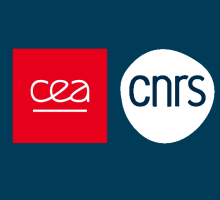Séminaire de Pier Luigi Cudazzo
Lundi 11 avril 2016 14h30. Accueil café 14h, bâtiment 83 1er étage salle de réunion
The investigation of elementary neutral excitations such as excitons and plasmons is one of the most powerful ways to understand, predict, and design the properties of materials. In particular the study of their dispersion as a function of the momentum transfer determines the way in which they propagate inside the crystal and transport their excitation energy. This property is of crucial relevance for all applications involving light harvesting, and also provides fundamental knowledge about exciton or plasmon mobility and migration.
Using a state-of-the-art many body Green's function approach we present a first principles study of excitons and plasmons in two dimensional (2D) materials. In particular we investigated the exciton dispersion in graphane and hBN[1] and the plasmon dispersion in metallic Transition metal dichalcogenides[2]. From our results we provide a general picture of the mechanisms governing the dispersion of neutral excitations in 2D systems, and of the role played by the confinement of the electronic charge in setting the exciton binding energy[3,4].
In particular we found that due to the strongly reduced screening of the Coulomb interaction in lowdimensional materials, the binding energy of both Wannier and Frenkel excitons in the optical spectra is large and comparable in size. Therefore, contrarily to bulk materials, it cannot serve as a criterion to distinguish different kinds of excitons. Here we demonstrate that the exciton band structure, which can be accessed experimentally, instead provides a powerful way to identify the exciton character.
[1] Pierluigi Cudazzo et. al. (in preparation)
[2] Pierluigi Cudazzo et. al. NJP 15 125005 (2013)
[3] Pierluigi Cudazzo et. al. Phys. Rev. Letter 104 226804 (2010)
[4] Pierluigi Cudazzo et. al. Phys Rev. B 84, 085406 (2011)


